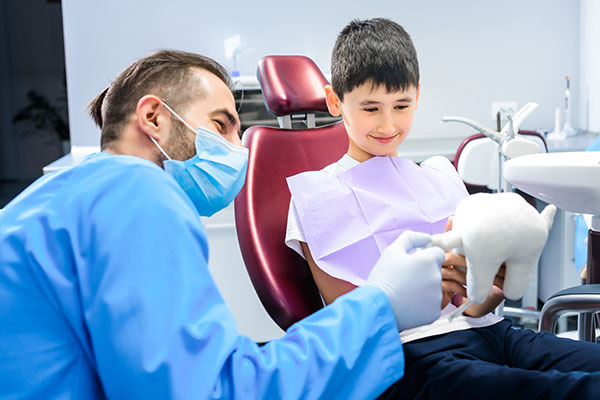What Will Happen in an Oral Cancer Screening?

An oral cancer screening is a visual and physical evaluation of the oral cavity and associated structures to check for signs of potential problems and prompt quick treatment if any are detected. A dentist might suggest a screening based on the patient's lifestyle choices, or it could be done as a precautionary measure. According to the National Cancer Institute, it is advisable to undergo screenings before cancer symptoms become apparent. The following sections explain what goes on during an oral cancer screening.
Oral cancer screening process
Visual exam
The main areas scanned during oral cancer screenings include the face, lips, neck, nasal cavity and oral cavity. During a screening, the dentist will check for swellings, asymmetries, color patches, ulcerations or any abnormalities. A dental light and mirror will be used to see inside the nose and mouth clearly, and a tongue depressor will hold the tongue down so that the dental professional can examine the back of the mouth.
The patient may need to open their mouth wide to reveal the obscured areas of the throat. Other tools may be used to examine the gums, roof of the mouth, tonsils, inner cheek, throat and beneath the tongue.
Physical examination
After or during the visual exam, the dentist will touch the patient's head and around the cheekbones, the jaw area, inside the oral cavity and under the chin to check for abnormal nodules or masses. Another indication of a potential issue is stiffness in normally mobile tissue, and the patient may be asked if the touch causes any form of pain. Oral cancer symptoms can be painful, although painless swelling can indicate an issue elsewhere. The patient might also be asked to swallow during the throat examination.
After the oral cancer screening
The oral cancer screening is not diagnostic but a precautionary measure. If the dentist discovers nothing out of the ordinary, they may ask the patient to return at regular intervals for additional screening—especially if the person uses tobacco, consumes alcohol or indulges in any activities that may increase the risk of oral cancer.
In some cases, the dentist may refer patients for additional testing to get to the root of a particular symptom. It is important to note that more testing does not equate a cancer diagnosis. Even if cancer is eventually discovered, early diagnosis reduces treatment for related health issues. It also increases the chances of treating the condition successfully.
The treatment for oral cancer will depend on the stage of cancer—how far it has spread around the lip and mouth area. Some of the treatment options may include chemotherapy, radiation therapy and surgery.
In conclusion
The oral cancer screening is more than just a medical examination—it is a chance for a patient to discuss their fears and concerns with a general dentist and a chance for them to ask a dentist's advice for reducing risks. If you feel anxious about a screening, you can make a list of questions before the appointment. The quick examination can be a way to ease your fears.
Request an appointment here: https://www.aboutdentalcare.com or call About Dental Care at (435) 652-9105 for an appointment in our St. George office.
Check out what others are saying about our dental services on Yelp: Oral Cancer Screening in St. George, UT.
Recent Posts
A general dentist professional would be the most obvious choice of people to go to get an oral cancer screening. Because your dentist has most likely seen you before, they will be able to screen your mouth without any issue.Since a lot of people are not educated on oral cancer screenings, the most common questions…
Many dentists use routine cleanings or checkups as an opportunity to offer an oral cancer screening to their patients. This quick and painless check may be something of a mystery to many dental patients who do not know how the exam works or how important it can be. This is a blanket term for cancers of…
Gum disease is a common yet serious condition that negatively impacts oral health if left untreated. The condition can result from plaque and bacteria buildup, starting with mild symptoms and leading to tooth loss. Knowing the stages of gum disease and when to seek treatment can help protect your gums and teeth.Gum disease, or periodontal…
The CDC states that gum disease, also known as periodontal disease, is one of the leading oral infections in the United States. In addition, the National Institute of Health cites it as the most common culprit for adults losing teeth. Because the early stages of periodontal disease often do not have noticeable symptoms, many patients…


